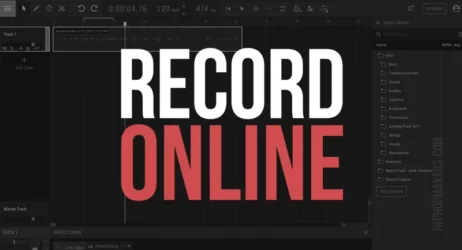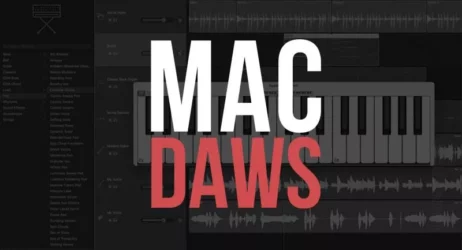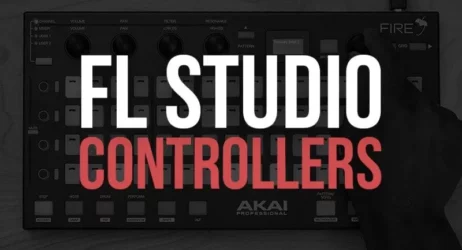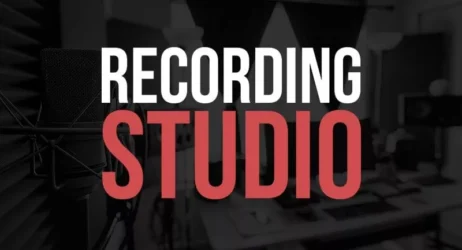Here we will explain what swing in music is, the different types of swing, and provide examples. So what is swing?
What Is Swing?
Essentially, swing music is an offshoot of jazz music. The idea of swing music blossomed in the United States in the 1930s and 1940s. Being a branch of jazz music, swing music is more focused on the weaker pulse and off-beat of the music.
- What is Swing in Music
- Types of Swing in Music
- Examples of Swing in Music
- How Do You Find The Swing of A Song
- How To Explain Swing Rhythm
- Jazz vs. Swing
- How Do You Create Swing Music
- How Do You Count a Swing Beat

What is Swing in Music?
Swing music took its roots in the United States in the early 20th century, in the 1930s and 1940s. Swing music is, in its essence, a form of jazz music with a high emphasis on the weaker pulses and the off-beats.
Swing has two significant meanings in music – It is used generically to describe the propelling character or “feeling” of a beat, notably when the music elicits an emotional reaction such as foot-tapping or head-nodding. Among music fanatics, this sensation is sometimes referred to as ‘groove.’
Swing music is more specifically used to allude to an approach (most commonly associated with jazz but also used in other genres) that involves intermittently elongating and narrowing the first and second consecutive notes in a beat’s two-tier pulse divisions.
Swing music has a captivating drive that is created by performers’ assaults and accenting in relation to set rhythms. Swing rhythms transcend usual categorization.
It is sometimes regarded as a partial dilution of the jazz tradition because it coordinated musicians into big groups (of around 12 to 16 maestros) and required them to play a far larger proportion of authored music than was previously thought closely aligned with jazz’s profoundly virtuosic nature.
A swing in music is more about the ‘feeling’ of the rather than its tune and melody. ‘Swing’ music has a rhythmic cadence whose interpretation is based mostly on the ‘feelings’ of the player and the audience listening to them.
Straight music is music that is not played in the swing style. Some artists are regarded to have a stronger swing than others, which means that their compositions deviate more from a straight rendition of a song.
Earlier in the day, soloists in swing orchestras would usually improvise on the chorus over the arrangement.
From 1935 to 1946, the period is known as ‘the swing era,’ the danceable swing style of reputed bands and bandleaders such as Benny Goodman was the prevalent genre of American popular music.
The swing era also elevated the reputation of jazz, bringing it into the ballrooms of America, where it had previously been linked with New Orleans brothels and Prohibition-era Chicago gin mills. Before the time of musical exploration, the swing era was the last major blooming of jazz.
Swing, at its best, was an art of improvisation in which contemporary harmonic norms matched the artistic uniqueness of its talented artists.
The words ‘to swing’ are frequently used to complement musicians playing with a strong beat or groove.
We believe that musicians’ swing’ when they play off each other’s musical compositions in the present, approach performing together with a renewed and exhilarating attitude, and listen carefully and respond to each other with confidence and pleasure.
What Are The Different Types of Swing in Music?
As of today, there are many types of swing in music that you may come across; mentioned below are some of the most popular ones.
Sweet Swing
Sweet swing is more of a ‘style’ of swing music. Much slower rhythms and less improvisation usually denote it, and it only provides a subtle swing feel.
Swing Piano
In this technique, the pianist plays quite rhythmically and contributes to the pace of the cadence.
The pianist’s left hand merely plays chords on the beat, while their right hand creates chord progressions based on chords and chord tone (particularly guide tone).
Hot Swing
Hot swing is another ‘style’ of swing music, and it is marked by strong, exhilarating, accompanied by aggressive rhythms and even stronger, extended improvisations.
Vertical Improvisation
Vertical improvisation opens up a whole new melody based on the rhythm of the song by arpeggiating the chords and adding additional chord changes and substitutions to make solos more sophisticated and challenging.
Later, this method evolved to abandon the song’s previous melody in favor of creating entirely new melodies based on a preexisting chord progression – this was known as a contrafact.
What Are Some Examples of Swing in Music?
When it first took roots in the 20th century, swing music was ‘the deal,’ contributing tons to American culture.
You might have listened to songs with a swing in them without even realizing that you were listening to swing music!
Below are some examples of the top songs with swing music.
- “Sing Sing Sing” by Benny Goodman & his orchestra.
- “One for My Baby and One More for The Road” by Frank Sinatra.
- “In the Mood” by Glenn Miller Band.
- “Summertime” by Billie Holiday.
- “A Tisket, A Tasket” by Ella Fitzgerald.
- “Boogie Woogie Bugle Boy” by The Andrews Sisters.
Related: What Is Indie Music?
How Do You Find The Swing of A Song?
Finding the swing of a song is no rocket science, and you can easily do it on your own if you know your notes and music science.
Usually, while swinging music, one hand plays the first 8th note on the beat, while the other hand plays the second 8th note, which is slightly delayed purposely.
The best way to find the swing of a song and differentiate it from a straight rhythm is by closely listening and paying attention to the beats.
While the sheet music is composed in the same manner as a straight rhythm, the way it is played is quite different. A swinging beat has the sensation of a triplet but overlooks the middle triplet.
How Do You Explain Swing Rhythm?
Swing rhythms are marked by an emphasis on the weaker pulses and the off-beats of the music the artist is trying to swing. To call music “swing,” it must include unbalanced 8th notes in the typical long, short, long, short rhythm.
Swung music relates to notes other than the eighth note and affects the overall style on a more comprehensive level.
What’s The Difference Between Jazz & Swing?
Swing is a jazz subgenre. The name “swing” can refer to a variety of musical styles, although swing music evolved from jazz, which became popular in the 1920s. Over the years, swing music evolved as a distinct style of arrangement and instrumentation.
Swing music is usually the more ‘danceable’ traditional big band music you’re undoubtedly used to hearing. “In the Mood” is an excellent example of a swing chart. Swing adds more rhythm to jazz, transforming it into a dance type of music.
Swing is a kind of jazz music that is not in competition with it but only enhances it. Swing music is more rhythmic and energetic than other types of jazz.
How Do You Create Swing Music?
Mastering the shuffle/swingbeat is a simple and efficient technique to learn how to swing on any instrument. The goal is to play eighth notes in a lengthy short rhythm instead of eighth straight notes (play the first eighth note as two tied eighth-note triplets and play the last eighth note as an eighth note triplet).
It would help if you started with only one note and worked your way up and down scales until you’ve mastered the beat.
Swung eighth notes are one of the most distinguishing characteristics of swing rhythms. Swing eighths are played as uneven eighth notes in a quasi-triplet beat, with the fraction moving from 1:1 to about 2:1—that is, the first eighth note is approximately twice as long as the second eighth note.
Swing eighths are prefixed as ordinary straight eighths but are played unevenly in a quasi-triplet rhythm, with the first note being twice as long as the next.
Backbeat is a frequent syncopation in jazz that is generated by accenting beats 2 and 4 of a quadruple meter. When the meter hierarchy is hidden, syncopation ensues.
How Do You Count a Swing Beat?
You can easily count a swing beat by singing ‘1 and’ in a swing triplet style, with the word ‘and’ delayed to indicate ‘let.’ It goes something like:
1 and 2 and 3 and 4 and 5 and 6 and 7 and 8 and 9 and 10 and 11 and 12.
You’ll note that skilled jazz players experiment with time, frequently playing much ahead or below the beat. Begin by considering appropriate timing on the 1, 2, 3, 4 notes. Sometimes there is an implicit accent on a number, such as 2, 4.
If there is one, you need to consider how the ‘let’ may be dragged or accelerated for an aesthetic impact rather than being plain triplet time. There’s a lot more to it, and it’s all subjective.
In the beginning, practice the piece in straight time. After that, you can switch to swing rhythm and then back again. This will train your ears to discern between the two.
You should be able to swing any piece solely by utilizing your ears in a matter of days. Another advantage of moving between the two is a better understanding of how to subdivide and highlight the rhythms throughout the song.
Swing Summary
Swing music is a subgenre of jazz music. In the 1930s and 1940s, swing music blossomed in the United States. Swing music is a jazz form that emphasizes the off-beat and broader pulse of the music.
I hope you found this information on swing helpful.
If we missed anything, please share it in the comments.







